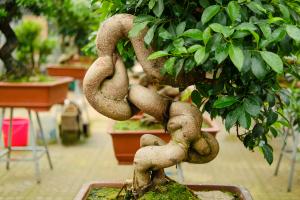Introduction to Watering Newly Planted Trees
Planting a new tree can be an exciting time, and it's important to take the necessary steps to ensure its continued growth and health. One essential component in doing so is giving the tree the proper amount of water.
Factors That Affect Watering Frequency
The amount of water needed for a newly planted tree depends on multiple factors. Soil type, temperature, and amount of rainfall all affect the frequency of watering. For example, clay soils retain water for longer periods than sandy soils, so trees planted in clay soil won't require watering as frequently. Likewise, during hot, dry weather, more frequent watering may be necessary than in cooler conditions with higher levels of rainfall.
Watering Techniques for Newly Planted Trees
When first planted, a tree will require consistent moisture. To ensure proper watering, you should begin watering the tree immediately after planting. Apply water directly to the soil in a slow and steady manner to allow sufficient absorption. Watering too quickly can cause the water to run off before it can be fully absorbed, while too much water at once can lead to root rot. It's recommended that you aim for one inch of water per week during the growing season. Using a soaker hose or drip irrigation system helps to control the flow and prevent over-watering.
Signs of Over-Watering or Under-Watering
It's important to monitor newly planted trees for signs of over-watering or under-watering. If a tree is receiving too much water, the leaves may turn yellow or drop prematurely, and the bark may appear waterlogged. On the other hand, if a tree is not receiving enough water, the leaves may also turn yellow and become brittle, and the tree may stop growing altogether. In either case, adjustments to the watering schedule should be made.
Final Tips for Watering Newly Planted Trees
Always avoid watering the tree's leaves, as moisture on the leaves can create a breeding ground for disease. Instead, apply water directly to the soil around the tree's base. Additionally, don't apply any fertilizer or chemicals until the tree has had sufficient time to establish its roots. Finally, keep in mind that watering needs can change over time as the tree grows and becomes more established. Regular monitoring and adjustments to the watering schedule will help ensure that the tree has the proper amount of moisture it needs to thrive.
Conclusion
Watering newly planted trees can be a nuanced process, but by following the right techniques and monitoring the signs of over or under-watering, you can help ensure that your tree gets the moisture it needs to grow and thrive. Taking the time to properly water your tree in its early days can pay off with years of healthy growth and enjoyment of its benefits.

 how many times do yo...
how many times do yo... how many planted tre...
how many planted tre... how many pine trees ...
how many pine trees ... how many pecan trees...
how many pecan trees... how many plants comp...
how many plants comp... how many plants can ...
how many plants can ... how many plants and ...
how many plants and ... how many pepper plan...
how many pepper plan...






























